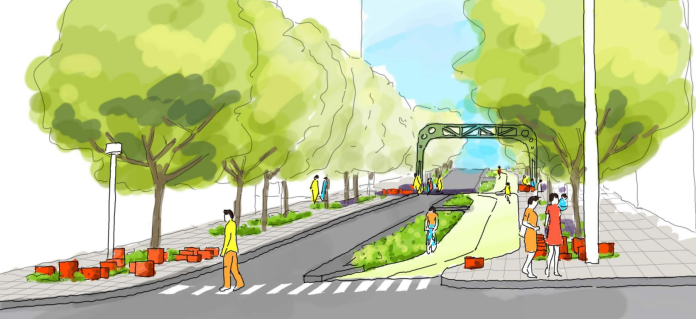
Officials stopped short of full pedestrianization, but do plan a cycle track.
Seattle’s special department focused on the revamp of the central waterfront has released a proposed concept for how to remake a two-block stretch of Bell Street, one of the final projects in the $781 million program expected to wrap up by 2025. The project, which started design well after the main waterfront corridor was under construction and other related projects on the corridor were getting their ribbon-cutting, has long been intended to better connect one of Seattle’s densest residential neighborhoods with the newly remade waterfront.
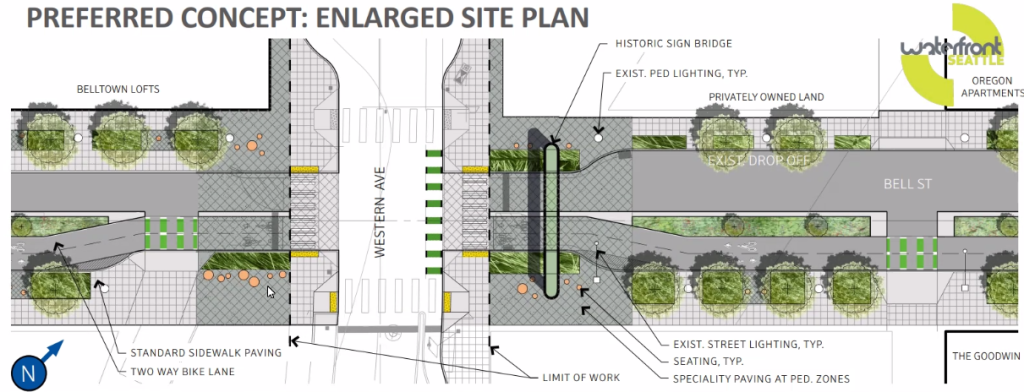
After nearly 95% of poll respondents told the city that the design of Bell Street should prioritize modes that aren’t driving early this year, a follow-up poll found around two-thirds of people still thought the city should go further in allocating space away from vehicles, with nearly half wanting more space for pedestrians. The proposed design retains one approximately 12-foot travel lane on the two blocks between Elliott Avenue and First Avenue, with a two-way cycle track along the south side of the street. Those two blocks will be the only separated bike facility that directly connects to the bike lanes on the brand-new Elliott Way roadway between Belltown and the waterfront.

The rest of the space would be dedicated to pedestrians, but there are some big hurdles standing in the way of making the most of the space. With only around $3 million to spend, the project team is trying to leave as much of the existing curb on Bell Street in place as possible — a curb designed several years ago that includes bump-outs at the intersections to accommodate parked cars mid-block. That means after the two-way bike lane is accommodated on the block, the amount of extra space for pedestrians is mostly limited to an expanded sidewalk along the north side of the street.
In March, Terese Casper of the Office of the Waterfront told the Seattle Design Commission that despite the overwhelming amount of feedback pushing in the direction of full pedestrianization, the City wouldn’t be going that far. “We feel we’re already significantly de-prioritizing vehicles,” Casper said then. “There does need to be a vehicle lane.”
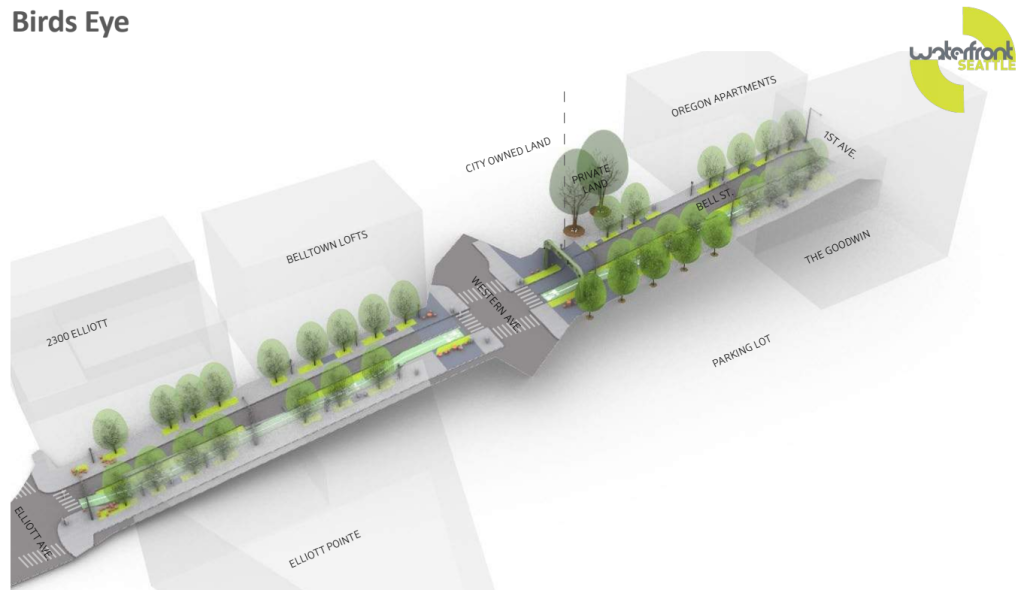
The strong desire to create to create people-centered space where visitors and residents alike want to spend time is clashing with a desire, coming from voices like those on the Belltown Community Council, to avoid creating a space that will attract uses that are seen as negative. At the meeting last week were they unveiled the proposed design, Rikerrious Geter of GGN, the landscape firm contracted by the City, told the group that they responded to feedback asking for seating to be scaled back.
“The first time we came [to the council] we had a lot more seating than we had now,” Geter said.
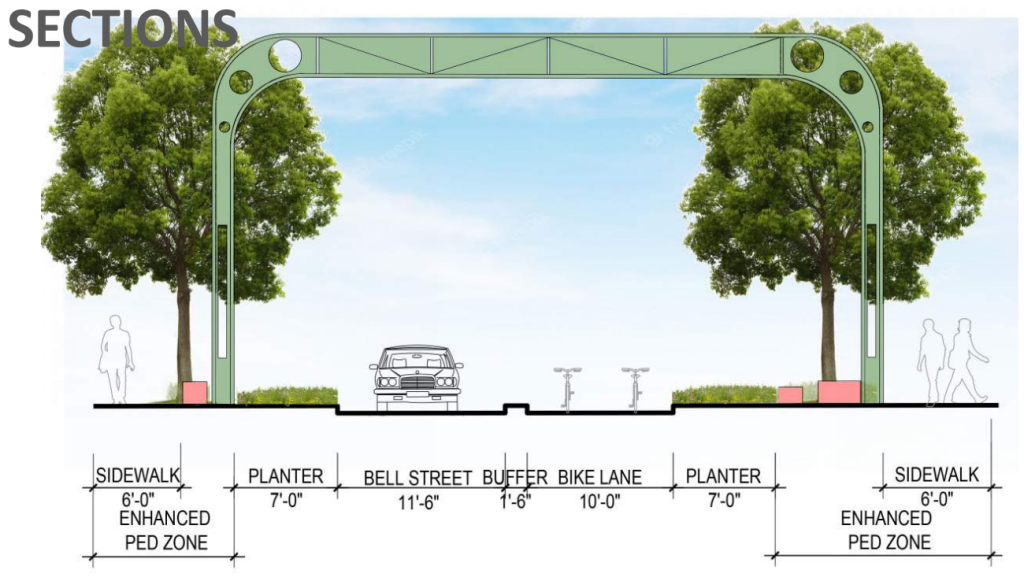
The proposal now includes some vague seat-like objects, shown being used as seats in the renderings that have been created so far, but Geter emphasized it was still too early to say exactly what those areas will actually look like. The entire Belltown end of the waterfront project has very few of the gathering spots planned in contrast with areas further south like the Overlook Walk taking shape near Pike Place Market, for example. In fact, pedestrian traffic up through Belltown is so much of an afterthought that the new Elliott Way sidewalks, which opened in April, don’t come with any pedestrian wayfinding to help people find their way to high traffic areas like Seattle Center or the Market.
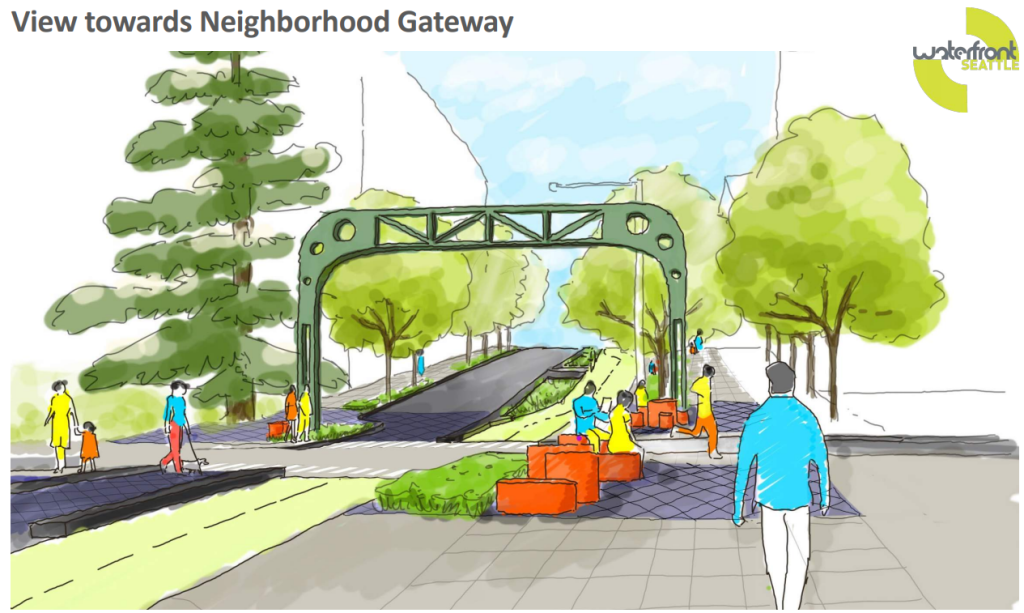
In contrast to the Office of the Waterfront removing seating from their plans for Bell Street, the Seattle Department of Transportation is working on an immediate plan to add seating and space for gathering nearby, at what is being called the “front porch” at First Avenue and Battery Street, one block north of Bell Street. Funded by a $500,000 allocation by Councilmember Andrew Lewis in 2021, the project is an attempt to activate at least a small portion of the Battery Street portal property where the Alaskan Way Viaduct previously transitioned to an underground tunnel. Most of the land is being held as a potential site for a downtown public school, which shows no signs of moving forward any time soon.
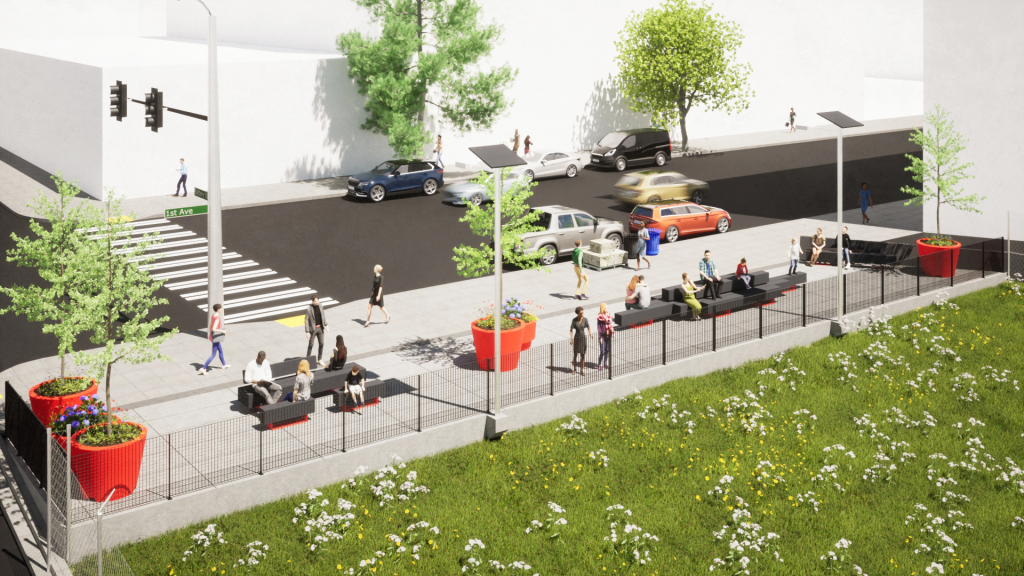
The planned upgrades on Bell Street, as a potential capstone for the north end of the waterfront redevelopment, will represent a positive step forward, with added space for walking and biking on a set of blocks that have been neglected in decades past. But, like the rest of the waterfront project, the missed opportunities for a fully pedestrian and bike-oriented street for people to access the waterfront are overshadowing those more modest upgrades.
Ryan Packer has been writing for The Urbanist since 2015, and currently reports full-time as Contributing Editor. Their beats are transportation, land use, public space, traffic safety, and obscure community meetings. Packer has also reported for other regional outlets including BikePortland, Seattle Met, and PubliCola. They live in the Capitol Hill neighborhood of Seattle.



